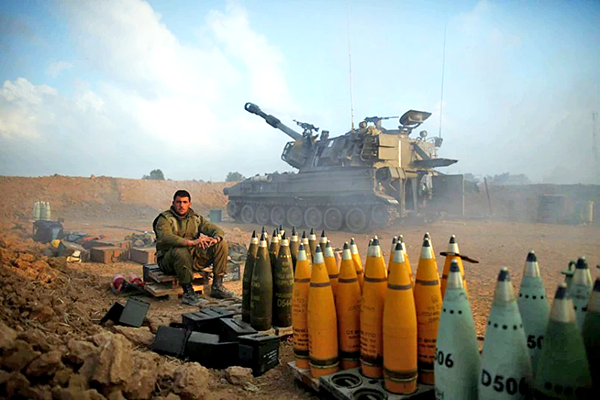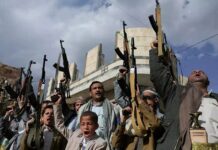Change in Israeli Strategy
Lessons Form the Israel-Iran, Ever since the revolution in 1979, there has been a significant shift in Iran’s foreign policy, and it no longer recognizes Israel’s right to exist.
Prior to 1979, Iran and Israel were allies. However, after the Islamic revolution, the new Iranian regime adopted an anti-Israel stance as part of its ideology.
Instead of direct military confrontation, Iran has engaged in proxy conflicts with Israel. It has supported various groups (such as Hezbollah, Hamas, and others) in Lebanon, Syria, Iraq, Yemen, and Palestine, which surround Israel’s borders.
These groups, once considered proxies, now operate with domestic autonomy and coordinate transnationally. They have become partners in Iran’s efforts to counter Israel’s influence in the region.
Israel’s previous strategy failed to ensure its security against Iran and its allies. The 7 October attacks exposed this vulnerability. In response, Israel shifted its approach, targeting key figures within the “axis of resistance” (the network of Iran-backed groups) and Iranian assets across borders.
Iran’s consistent message has been to avoid broader regional conflict, but it needed to restore its deterrence capability. Thus, the April 13 direct drone and missile attack on Israel aimed to redefine red lines and create a new equation with Israel.
Following the attack, several countries (including the United States, France, Germany, and the United Kingdom) warned Iran against further escalation. Israel also cautioned that any attack could lead to a direct Israeli military response on Iranian soil.
Israel has employed both covert and overt methods to target IRGC and Hezbollah leaders, impacting the dynamics of the Iran-Israel conflict in the Middle East. Some notable attacks carried out by Israel against Islamic Revolutionary Guard Corps (IRGC) and Hezbollah leaders after as follows:
Imad Mughniyeh. Imad Mughniyeh was a prominent Hezbollah leader and a key figure in Iran’s proxy network. He was responsible for numerous attacks against Israel. On February 12, 2008, Mughniyeh was assassinated in a covert operation in Damascus, Syria. His car was targeted with a car bomb, resulting in his death.
Qasem Soleimani. Qasem Soleimani was the commander of the IRGC’s Quds Force, responsible for Iran’s overseas operations. On January 3, 2020, he was killed in a covert drone strike carried out by the United States in Baghdad, Iraq. Although not directly by Israel, his death significantly impacted Iran’s operations in the region.
Brig Gen Mohammad Reza Zahedi. Zahedi was a senior Quds Force commander within the IRGC. On April 1, 2024, an Israeli airstrike in Damascus, Syria, targeted the Iranian consulate annex building next to the Iranian embassy. Zahedi was among the 16 people killed in the strike, including Gen Hossein Salami.
In retaliation for Zahedi’s death, on April 13, 2024, the IRGC, Hezbollah, and other Iran-linked groups launched retaliatory attacks against Israel and the Israeli-occupied Golan Heights. The operation involved the use of drones, cruise missiles, and ballistic missiles.
READ MORE – Editorial IMR Feb 2021
The Israeli Defense Forces (IDF) successfully intercepted most of the threats, but the situation escalated tensions in the region. The attack demonstrated Iran’s willingness to directly engage with Israel, marking a departure from its previous avoidance of direct confrontation.
The ongoing conflict between Israel and Hamas in the Gaza Strip has the potential to escalate further. Here are some possible scenarios:
Israel Takes Control of the Gaza Strip. Historically, Israel controlled the Gaza Strip militarily until 2005. It’s conceivable that Israel could regain control, but this move would likely provoke new militant attacks and disrupt the regional balance of power. Some voices in Israel have suggested recolonizing Gaza, but such a step would fuel the Israeli-Palestinian conflict.
Continued Escalation and Ground Offensive. Israel has declared its intention to destroy Hamas. The endgame of their military action remains uncertain.
Power Vacuum and Anarchy. If Israel achieves its goal of eliminating Hamas, a power vacuum must not be allowed to emerge. Rapid withdrawal could lead to anarchy and radical Islamist groups filling the void. The situation in Afghanistan, where the Islamic State exploited state weakness after the Taliban takeover, serves as an example.
International Diplomacy and Mediation. International actors, including the United States, may engage in diplomatic efforts to prevent all-out war. Mediation and negotiations could play a crucial role in de-escalation. However, achieving lasting peace remains challenging given the deep-rooted historical grievances and geopolitical complexities.
Regional Spillover. The conflict could spill over into neighboring countries, affecting regional stability. Escalation might draw in other actors, leading to broader hostilities. Regional powers, such as Saudi Arabia, Egypt, and Turkey, are closely monitor developments.


















